Note: this is “a sequel” to What’s Happening… (dated 12-14-16)
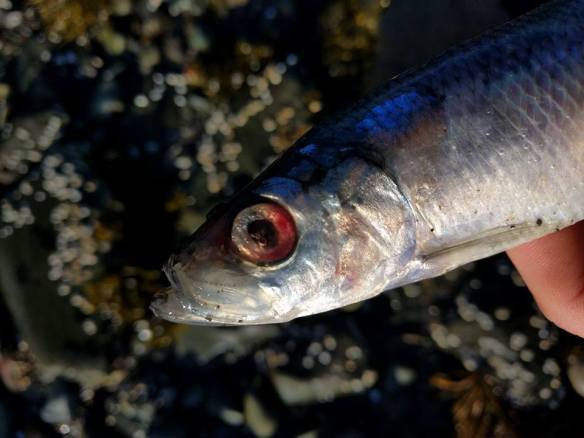
Prepared by:
Ann Pohl, Kent County NB Chapter, Council of Canadians
January 23, 2017
1. It May Be Over
For now, the herringcide crisis in the Bay of Fundy may be over. The last observed occurrence of this winter’s major die-off was January 4, 2017. This is according to retired University of Saskatchewan scholar Dr. Ted Leighton, renowned for his work in wildlife disease research.
However, if DFO walks away from this now, we may well see more of the same at the time of the Spring Herring Run in the Upper Fundy (see Sections 6 & 7). In my worst fears, there may be another round of herringcide.
On January 4, 2017, birdwatchers known to Leighton saw an estimated 20,000 seagulls on one remote, distant stretch of beach in St. Mary’s Bay. There were also an exceptional number of crows, eagles and ravens. All were feeding on dead and dying fish on the shoreline, as well as fish at the surface of the water. The huge confluence of birds was not there on January 3rd or on January 5th. Leighton concludes, based on prior events, that this Jan 4th feeding frenzy signified another big beaching, more so considering herring do not usually swim on the water’s surface during the day. What this deductive process illustrates is it’s almost impossible to calculate the scope of the herringcide crisis. To my knowledge, the Jan 4th event went unacknowledged by DFO. (ft.1)
The very next day, after this re-enactment of Hitchcock’s “The Birds” on St. Mary’s Bay, regional staff at the Department of Fisheries and Oceans (DFO) held a media conference. Two members of the Council of Canadians (COC) took part in the media briefing on January 5th via teleconference. We did so to get the information that DFO was sharing, unfiltered by public hysteria, rumour, or the media (who at times propagate both hysteria and rumours). Teleconference is not the best way to participate in a forum like this. It was very difficult to hear well, and we could not see who was speaking. Still, we took notes. Staff from DFO and at least two other federal departments/agencies, CFIA (ft.2) and ECCC (ft.3), explained that they had looked at all the things they thought might be causative, and had come up empty-handed.
And on the next day, Jan 6th, the experts from DFO, CFIA, and ECCC, etc., held a “citizen scientist” briefing and apparently repeated what they they had shared on Jan 5th (ft.4).
Subsequently, I discussed what was learned on Jan 5 and 6 with my colleague, as well as wildlife, coastal and ocean protection allies Ted Leighton, Darren Porter (fisherman), and Matt Abbott (Fundy Baykeeper and Marine Conservation Coordinator for the Conservation Council of New Brunswick).
It is not surprising that DFO wants to minimize and move on after this herringcide. In its post-Harper whipped and stripped state, the surviving DFO science staffers are doubtless suffering PTSD and gasping for air. (ft.5) At the same time, the extraordinary aspects of this event lead to the term “herringcide.” The inescapable conclusion of those watching closely is that, in some way not yet determined, human activity led to this mass death. Not identifying the cause is a huge failure. DFO research could have led to breakthroughs that would support super-stressed marine life coping with our dying oceans and critically ill planet.
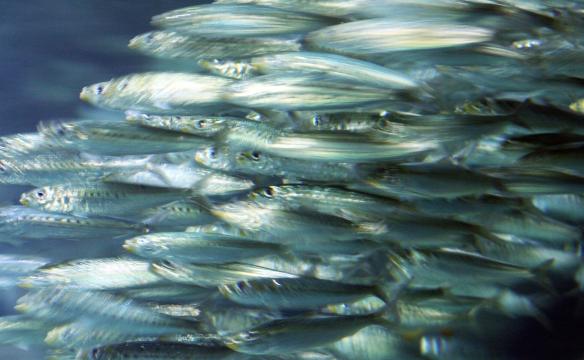
Some forage fish species are already in trouble. Pacific sardines are at their lowest numbers in decades
Following are point-style lists of what is known, possible, unknown, and theorized, about the herringcide, followed by general discussion.
2. What was Learned at DFO Briefings?
- There has been an extraordinary “densification” or “aggregation” of herring in the three areas where the dead herring have beached. This is the only thing everyone agrees on, including experts at these sessions and all fisherfolks in the region. Previously, one citizen scientist described it as “thick, from top to bottom in the water, like they are stacked on each other.” NOTE: DFO offered no possible explanation for “why”.
- Extensive tests have been done by several federal agencies. DFO asserts they have ruled out infection, viral diseases, physical injury, algeaic blooms, and environmental toxins, as the cause of the herring die-off. DFO has also ruled out “predation” as a cause. Checks were done re: spread of any known cause from aquaculture installations, and this has been ruled out. The DFO laboratory in Moncton analyzed dead herring samples and found no evidence of abnormalities. Environment and Climate Change Canada (ECCC) scientists have done some investigations into possible land-based/industrial toxins. Seemingly late getting into the game, ECCC has found nothing but as of early January were still “finalizing results of testing for pesticides and are conducting other tests on water quality.” Routine tests checking for health of shellfish harvested for consumption were double-checked and confirmed as not a factor. The Canadian Food Inspection Agency (CFIA) stated that the fish and seafood from the Bay are safe to eat. DFO continues to caution not to eat the ones that are beached, but to buy from licensed vendors.
- A webpage was to be launched that afternoon. DFO promised me it will have full information on all tests on fish, water, etc., including locations of samples, dates, what tests were done, and results, as well as a map where the reported “morts” (marine life mortalities) were found. Here is Matt Abbott on this: “I participated in a call on Jan 6, 2016 regarding the mortalities of herring and other creatures over the last several weeks. DFO staff committed to update this website to include more detail, especially relating to test results (including all that came back negative).” After two and one-half weeks, the webpage is up but these details are not on it.
- DFO was very clear that they do not now know what killed the herring and may never be able to figure it out.
- One camera was sent down to the Fundy floor in the vicinity of the die-offs. The benthic marine life was fine there.
- My notes from this media conference show as follows. When I asked if DFO had considered asking Cape Sharp to turn off the turbine, the response I got was, “There is no evidence to support that the turbine could be a cause, so we are not investigating that possibility.” In almost every media report, DFO answered the same way to this question. However, in a January 3rd communication between DFO and the Bay of Fundy Inshore Fishermen’s Association (BFIFA), there is a slight qualification, “…DFO does not unequivocally rule out the turbine. The statement made is ‘based on all of the work and the analysis and testing we don’t see any evidence that would point to an issue related to the turbines’.” 6 Consider that DFO’s own experts said eight months earlier that Cape Sharp/Emera had failed to provide either adequate baseline data or a valid monitoring plan for environmental protection. For an unknown reason, the proponent was given permission by the Government of Nova Scotia to proceed without the data or improved plan in place. Why would DFO fall back now on proclaiming the lack of evidence as their excuse for refusing to consider the possibility?

Cartoon credit: Bruce MacKinnon, The Chronicle Herald
3. What More do We Know, but Not from DFO?
- Herring have unusually sensitive auditory systems, for a fish.
- Herring usually do not swim on the surface in the day time, and those seen alive near shores and boats, were doing so and also exhibiting other odd behaviours. Why?
- The Gulf of Maine has arguably the fastest warming ocean water on the planet, and species travel to cooler areas and affected in other ways by ocean temperature and related chemistry changes. Some herring fishermen in the Upper Fundy believe that herring may now be overwintering there.
- Ecology Action Centre’s (EAC) “Making Forage Fish Count” is an excellent reference document on the larger issues of the vulnerable herring and mackerel populations. It mentions herring size has diminished over recent years, which may be due to climate change stress. This report also says that overall herring stock in this entire region from Cape Breton to Maine are stressed and likely diminished; and, when a population bottoms normally it gradually begins to rebuild over several years. (NOTE: The past couple months there has been a sudden, absolutely gigantic, upswell of population in the three areas where the morts appeared, called “densificiation” by DFO.) The EAC report concludes, “One of the most pressing issues facing the management of Atlantic Herring is the lack of regulation and monitoring of herring bait fisheries.” The data on the size of the stock has also not been assessed by scientists, and “without proper catch and abundance estimates, it is difficult to accurately determine stock status.” In other words, DFO does not do the needed stock inventory counts and catch-checking, and this is aggravated by the lack of limits on landing herring for bait purposes. The report argues for a “precautionary and ecosystem-based approach” to managing herring population.
- In recent years, including this one, there have been mass herring die-offs in other regions of the Atlantic as well as in Chile. At least one of these cases may be very similar to the one in the Bay of Fundy: the situation in Iceland (the link provided is not the best reference but it is a starting place). Why did DFO not look into this or if they did, why did they not mention it to the public?
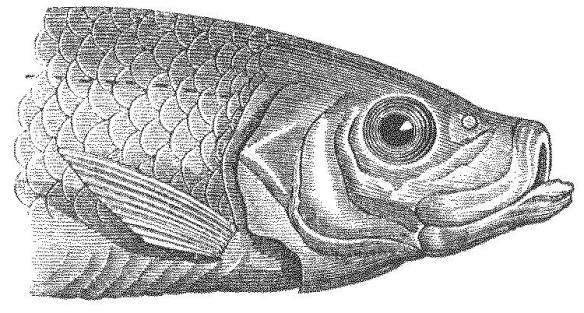
- FORCE (Fundy Ocean Research Center for Energy) is the umbrella corporate-government organization nurturing tidal energy development in Nova Scotia; the Cape Sharp/Emera project is one of their approved experimental operations. In mid-April 2016, a company called Big Moon Power was given approval by FORCE to run an off-grid test in the Minas Passage, related to a new type of tidal power equipment that does not use in-water turbines. According to Darren Porter, who has talked with his fellow weir fishermen beyond the Passage, this experiment completely disrupted the 2016 herring fishery (see 1:29:45 at this link, which is also footnoted below #9). What Porter explains is that the 2016 Spring Herring Run was only just getting underway when Big Moon brought its tugboats into the Minas area, and seemingly the noise scared the herring back down the Bay. There are six or seven herring weir fishers at the Passage and in the Basin. One may be in talks to reach a financial settlement on this matter. Apparently the subsequent 2016 Gaspereau fishery in this area may also have been diminished.
4. Other Pertinent Points:
- Fishermen and “citizen scientists” say the dead herring were mostly juveniles, perhaps coming to spawning age next year. This points towards population decline in coming years.
- On November 28th, there was a media report of “seals with gashes on them” as well as dead herring. To my knowledge, DFO has made no acknowledgement of the wounded seals seen near “mort” sites by Joan Comeau, and certainly offered no explanation of how this might or might not be related to the herringcide.
- It is not yet clear if DFO did necropsy of the herring to examine specifically for swim bladder-related damage, which can prove auditory trauma and shows in four ways, specifically: ruptured bladders, emphysema in the heart ventricle, and emboli in either the rete mirabile and/or head kidney.
- DFO was asked if they can provide population data on how many herring they would expect to find in the Bay’s basins or coves at this time of year. They did not have that information.
- Many “citizen scientists” say DFO has put all its efforts to this issue, once they realized how serious it was. On the other hand, on December 26th CBC’s As It Happens interviewed community member Joan Comeau said she first reported herring die-off to DFO on November 17th and never got a call back. Looking at DFO tweets, the first showing they were “on the case” was December 14th. (NOTE: This is when our first blog, “What is Happening to the Humble Herring?” was posted online.) Do these instances indicate a generalized sluggish response by DFO, or are they basically communications failures?
- On Jan 5th, I heard a member of the expert panel muse that “as many as 1000 people altogether” from the relevant government departments had been working on this for weeks. On one hand, it is no wonder they could not figure anything out with that number of administrative, clerical, frontline, specialist, and other staff running around in all directions. Conversely, how could they do such a poor job of communications and information-sharing, and why did they not come up with some sort of viable theory on causes, or at least a plan for what they need to look into further?
- On Jan 5th a member of the media asked how many herring died in this event. Further undermining public confidence, DFO staff showed they still had not grasped the depth of this crisis by answering “tens of thousands.” Perhaps DFO was trying to downplay the crisis. As likely, they lack capacity to send real researchers into the field. Most probably the personnel who picked up the dead fish samples are the ones usually out in the field to catch poachers and monitor catch regulations. These workers would have had no idea how to calculate the scope of the die-off based on what could be seen at lowtide on the beach. ALL reports from citizen scientists working closely with the department point to greater than a million dead herring, perhaps several million. As Dr. Leighton said way back on Dec 1st, “What we see on the beach is just a partial window on what’s going on somewhere out on the water.” This is exactly why we urged DFO to get out on the water and send down cameras/divers at multiple points.
- For more than six weeks, DFO focused on “usual suspects” – what past experience had taught them would kill herring. They frequently referred to the only similar recorded event, which occured in the 1970’s… But it was not similar: fors starters, that incident did not include “densification.” In early December, DFO quickly ruled out the cause of that die-off with their first round of tests. While DFO kept looking at the “usual suspects” based on events that appeared very different, they wasted a lot of time and valuable research opportunities. Why?
5. Can DFO see the Whale in the Bathtub?
There is an old saying about “not seeing the elephant in the room.” Adapting it to this watery world, DFO, ECCC, their provincial counterparts, and their political masters are not seeing the “whale in the bathtub”. As the EAC has pointed out, DFO lacks an ecosystem approach.
Due to human activity, all marine life in our ocean waters is endangered. Their watery home is rapidly becoming less hospitable. Species are behaving in abnormal and unpredictable patterns, often associated with their demise. Yes, this season, it is only the humble herring caught in the ecoapocalypse cross hairs in our beautiful, abundant Bay of Fundy… But, so many species rely on a healthy herring population and there are many recent reports of herring die-offs around the world. This herringcide is truly a case in point. It’s now or never to change how we do things with our sister and brother, aunt and grandfather, all our relations, in the natural world. There is no Planet B.

For almost two months DFO has assured the media “there is nothing out of the ordinary,” “nothing amiss,” and “not a great cause for concern.” DFO also consistently messaged they “don’t think fish are being harmed by environmental factors” and the cause is not due to “human activity” or “human-related.”
The “don’t worry” and the not “human related” messaging is manifestly anthropocentric. DFO’s actions were as well: they tested and retested for fish conditions that could impact people who eat Fundy herring, or that could sicken people who eat creatures (such as salmon or lobsters) who eat the herring. Again, as EAC says, DFO does not have an ecosystem approach. DFO’s messaging is only concerned with reassuring human consumers that it is safe to continue eating Fundy fish and seafood.
Not “environmental”? How can DFO make that statement if they do not know why it happened? The theories not disproved start with human-caused environmental stress, due to climate change and ocean warming.
- Planetary marine health is increasingly compromised by the warming of the oceans, which serve as a major and primary planetary carbon sink.
- Chemical composition changes in our planet’s oceans such as acidification are a recognized stressor on all marine life. (ft.6)
- Everyone in touch with the natural world is noticing species, including marine animals, moving from the usual habitats into new ranges – likely due to temperature or other weather changes as our climate becomes less and less “normal.”
- In particular, the Gulf of Maine, of which the Bay is a part, is warming dramatically. This alters marine life population distributions.
From the beginning, the mass herringcide was extraordinary, including abnormal swimming behaviours, and signaled something entirely new. A quick, bona fide scientific response would have enabled timely collection of priceless genuine environmental data, such as water quality, temperature, chemistry, and distribution of the herring population throughout the Bay.
After the initial quick tests came back negative and the second round were duly commissioned, DFO should have intently focused on the unusual facts of this crisis. They should have immediately examined – by diver and/or camera – the subsurface Fundy down to the benthic region, at key coastal areas where die-offs were seen. As important, camera/s or diver/s should have been sent down in other areas from Yarmouth to the Minas Passage (see Section 6) that, based on currents and other factors, may be implicated. As well DFO should have been:
- energetically collecting data on water chemistry/temperatures and distribution of herring populations from the top of the Bay to the near Gulf;
- enlisting fishermen’s and citizen scientists’ collaboration and observations to keep costs down and build knowledge;
- looking at parallel crises in other parts of the world (especially Iceland, as mentioned above);
- bringing together all available brains to think outside the box; and,
- fulsomely sharing their explorations into these realms with the concerned public because maybe out there in the civilian world there was someone who had a theory that might be useful.
The collection of knowledge and data in a timely, valid manner would have changed the outcome, at least in terms of knowledge gained. Instead, the public servants entrusted with duty of care for marine life in the Bay of Fundy are saying they may never know what caused this.
As Evan Young, a New Brunswicker from the Fundy who runs a canoe outfitting/tripping service, said on social media, “How could the analysis be over until we have some idea what happened? What’s missing is the sense that the government actually reports to us, the people, the taxpayers, on this.”
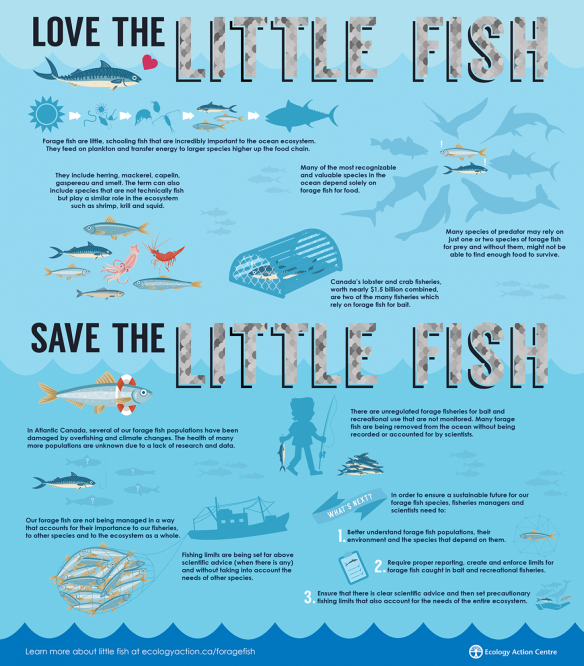
6. Best Remaining Guesses: Causes of the Herringcide?
To repeat: the term herringcide is used because with all the usual causes excluded at the outset and the extraordinary factors mentioned above, it is evident the herring were killed by something/s people did, or something/s people did not do. As with any man-made disaster, there is a domino effect here, one small issue leading into the next larger one. Bang! Herringcide. Here are some theories:
- Although we know from DFO that food-chain predation is not the cause, the herring were running away from something. They crushed themselves into these three somewhat sheltered areas, and succumbed to lack of oxygen from being in such density in these havens.
- One credible citizen scientist hypothesizes the herring normally in this area had a huge population boom this year and starved to death due to their overpopulation.
- Land-based/industrial contaminants may have been causal or partially causal. The argument supporting this is that the die-offs occurred in the mouths of three major watersheds.
- Some of the other species found dead during the same time period may have been killed by causes unrelated to the herringcide. Weather, specifically quick and dramatic temperature changes, might have been the factor in the one-day dramatic shellfish die-off. I have heard no alternative explanation for the whale death/s. The wounded seals are not ever mentioned by DFO. Until we figure out what killed the herring we will not know whether it is linked to these synchronous deaths or harm.
As the herringcide progressed, DFO repeatedly said they were not ruling anything out, but they consistently refused to consider any possibility the herringcide could be causally connected to the turbine. We say that the failure to investigate this possible cause along with others illustrates the depth of institutional carnage in DFO, and the width of systemic biases. Failing to act quickly, effectively and inclusively could have contributed to the profound consequences.
Herring have very sensitive hearing biology, on which their capacity to thrive depends in various ways. Big Moon’s test at the Minas Passage in Spring 2016 (see Section 3), shows how accidental man-made changes in the Passage’s environment can have deleterious impacts. After the turbine was lowered on November 7th for testing and commissioning, the change in that environment may have scared herring away from the farthest reach of the Upper Fundy, sending them down the Bay, looking for accommodations that are in some ways similar to Minas Basin. This outcome would have begun anytime between November 7th and when the Cape Sharp turbine was connected to the grid and started generating electricity on November 22nd.
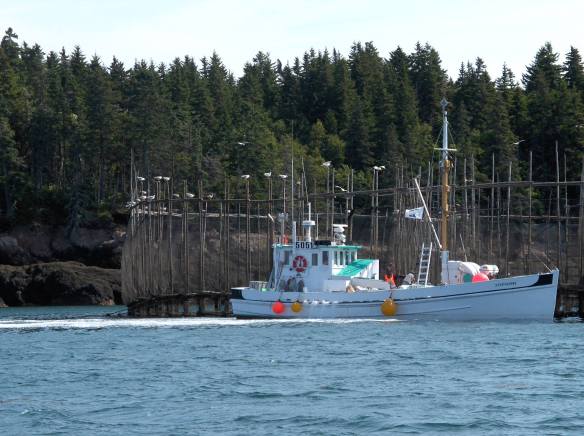
Photo credit: C.W.MacKay
Colin Sproul, Spokesperson for BFIFA, wrote to Christian Richard, Director of Cape Sharp Tidal Ventures/Emera on January 2, 2017 (ft.7) :
“…The past months have seen an alarming situation develop in the Bay of Fundy. The massive fish mortality overtaking its herring population has caused great concern amongst our membership. All scientific investigation thus far has failed to identify what is causing this to happen.
“One fact that cannot and is not being ignored by BFIFA members is the emergence of these fish kills immediately after activation of the CSTV turbine in the Minas Passage. Our members have a legitimate concern that the onsiderable acoustic disturbance from the turbine and the electromagnetic field present due to the failure to bury its transmission line as accorded in the environmental assessment approval may be having a deterrent/exclusionary effect on herring stocks in the upper Bay of Fundy.
“…[Y]our predecessor, Paul Laberge made an assurance to the BFIFA… if population level effects to a species were evident in the Bay of Fundy that you would cease operations. We contend that this may be happening now but acknowledge that there is not scientific certainty of this. However, it seems the only appropriate action at this time is to temporarily stop the turbine and see if the killing may cease….
“Therefore, the BFIFA respectfully asks CSTV to follow through on its commitment to take this responsible action to protect the Bay of Fundy’s critical herring population and help determine if the turbine is contributing to fish kills or not.”
I consulted a respected and successful international high-voltage electrical engineer on this issue. He had no knowledge or experience of a crisis like this being caused by electromagnetic waves. The industry is all about electric current and has been groomed to pay special attention to issues such as this. However, based on his knowledge of rationale behind environmental impact regulation for his industry in other jurisdictions, he felt that the herringcide could indeed be related to the turbine’s noise, vibrations and/or pressure changes. Without prompting, he suggested they may have “run away to find a safer place.” It certainly would have been very useful to have a count of usual population levels in the Cape Minas area, before the turbine was lowered so that could be compared to a diver/camera investigation of population in that same area after the die-offs began.
Asking DFO for a current population count on how many herring should have been in Minas Passage, or any other specific part of the Bay ,is useless. DFO could not supply this information at the Jan 5th media conference. Looking into the baseline population data in Cape Sharp’s EIA is also pointless. As mentioned above, DFO’s own science advisors critqued Cape Sharp/Emera/FORCE for not providing the baseline data necessary to ensure proper environmental monitoring. Even if their data were adequate (which it is not), the proponent also did not provide an adequate monitoring plan. DFO knew that the baseline data was not done and that this is a major concern of their own science advisors. It is confounding that DFO repeatedly refused to do their own assessment of the impact of the turbine’s impact at the height of the crisis.
The turbine was synchronously installed just before the herring die-off began. Right from the start of the beachings, fisherfolk, residents, ecotourism entrepreneurs, citizen scientists, and naturalists asked that the turbine be turned off as a precautionary measure, while examining to find the actual cause. The injured seals and the dead whale/s are additional reasons it would have been the right decision to see what was happening at the location of the new tidal turbine near Minas Passage, and if needed turn off the turbine to study further. For some reason, DFO would not even consider requesting this.
The responsible Government of Nova Scotia, which allowed installation of the turbine without adequate baseline data and a proper environmental assessment monitoring plan, appeared mute on the entire subject of the herringcide, the dead invertebrates, the chopped-up seals and the dead whale/s.

Photo credit: Joan Comeau
The petition we started online on December 17th is full of comments echoing what grassroots people were saying in social and mainstream media: shut down the turbine, look at the bottom of the Bay, and see if you can figure this out. From early on, the position of our chapter and others in Council of Canadians across the Maritimes has been the Cape Sharp/Emera turbine should be considered as “a stone that must not be left unturned.” We advocated to turn it off and look around. If this did not solve the quandary, it would at least put the hearts and minds of so many Maritimers at rest that the problem was NOT the turbine. We want to support renewable energy, but not at the cost of millions of marine creatures, perhaps on a recurring basis.
7. Lack of Capacity or Intentional Blinders?
The challenge DFO faced in November and December was to determine how we human beings are responsible for this, and how it could be prevented in the future. In our opinion, government’s institutional and systemic biases (particularly DFO) deeply influenced the causal factors investigated throughout the crisis. These biases have resulted in a dead end to their investigation. There may also have been forces (intentional pun) at play that caused some things to be obscured.
The comparative analysis in this article supports a conclusion that at least some of this apparent bungling is intentional. It shows how “company men” in management positions in our Maritime government bureaucracies engage in cover-ups of issues because it is important to corporations. When corporate agendas conflict with public concern, governments often seem to forget their obligations to transparency and accountability, “obligations” because that is what makes our democracy work. This holds in New Brunswick, Nova Scotia, Prince Edward Island, or Newfoundland, in federal and provincial systems.
We also need to consider that some frontline public servants are still hogtied by political will enshrined in non-legislative policies. We recently discovered a 2013 MOU between the National Energy Board (NEB) and DFO that gives the NEB authority for “assessing potential impacts to fisheries from proposed NEB regulated pipeline and power line applications.” This inter-bureaucratic agreement was developed under the Harper government and, added to that regime’s gutting of legislation, further undermines the capacity of DFO to protect marine life. It is true that this MOU applies only to projects under NEB auspices. However, could a similar MOU or policy-level “understanding” exist that resulted in Nova Scotia ignoring the environmental plan shortfalls outlined in the 2016 DFO Science Report on Cape Sharp’s turbine?
Documents filed in court by BFIFA show that DFO staff well understood, and appeared to concur with, the view that the turbine project proponent had failed to provide a proper environmental monitoring plan for this “experimental” project. Specifically in P21 of BFIFA’s October 20, 2016, Submission for a Stay to delay start-up of the turbine, it states that DFO staff wrote the Minister of the Environment for Nova Scotia and did not mention the missing baseline data. (ft.8) Why was this left out of DFO’s comments?
For the sake of all life in and around the Bay of Fundy, including the living water itself, we need to implement the Precautionary Principle. As Darren Porter says, “If you don’t have the money to monitor… and if you don’t have the baseline” data, don’t do it, “ecology comes first.” (ft.9) Incidentally, in this talk Porter says he got an email from the DFO on January 16th, in which DFO acknowledges that Cape Sharp’s single monitoring camera is not functional.
Just as this document you are reading was being prepared for publishing, there were two new media stories related to the herringcide. One is a report from Dalhousie scholars about tidal energy in general. The other is a CP Press story on the presentation that DFO did at the Nova Scotia Legislature. Both may be intended to do damage control; yet the many controversial issues raised in this document were not addressed in either of these settings.
Every point raised above still needs to be investigated. We need alternative renewable energy, but not at the cost of already deeply stressed marine life. As the BFIFA letter to Cape Sharp/Emera executive Richards points out:
“This situation has quickly shown that the absence of adequate environmental monitoring for the FORCE project can lead to a lack of social license and acceptance for tidal energy generation with Bay of Fundy stakeholders. Please begin the process of fulfilling your commitment to the BFIFA, this will surely start the much needed rebuilding of trust and acceptance amongst the greater Bay of Fundy community.”
NOW is the time for DFO to stop saying, “There is no evidence to support that the turbine could be a cause, so we are not investigating that possibility.” There is no evidence to support that it is NOT a cause of the herringcide, and DFO has already acknowledged that. For the sake of all marine and coastal life, no stone can be left unturned.
If this remaining possibility (the turbine) explains the herringcide, and if the transnational Emera’s tidal power experiment issues are not addressed, it is very likely herring will be pushed out of the uppermost Fundy, stressing the remaining populations in this region. That is an unacceptable possibility.
The intent of this document is to support community partners to rouse federal and provincial action. Emerging ecocrises are learning opportunities; we MUST study and understand what is actually happening on our planet. In specific, in this instance, we must sleuth our way to the core of the learnings that so many herring sacrificed their lives to give us. We must do this for the sake of all future generations of ALL LIFE on this planet.
This document is a follow-up to the earlier posts:
- “What is Happening to the Humble Herring?”
- An Open Letter to Political Leaders re: Marine Life Protection in the Bay of Fundy.
- Also of interest may be this online petition Dead Herring Demand Action.
Following circulation of this “Sequel” backgrounder, another Open Letter on Protection of Coastal Life and Oceans across Canada will pursue political responsibility issues. Stay tuned, there will be a chance to get involved in meaningful national action.
This document was prepared by: Ann Pohl, on behalf of the Kent County NB Chapter, Council of Canadians, and is supported by:
- Moira Peters, Member, Board of Directors, The Council of Canadians, from Maitland NS, on the Bay of Fundy;
- Marion Moore, on behalf of the South Shore NS Chapter, Council of Canadians;
- Leo Broderick, on behalf of the PEI Chapter, Council of Canadians;
- Marilyn Reid, on behalf of the St. John’s NL Chapter, Council of Canadians;
- Leticia Adair, on behalf of the Saint John NB Chapter, Council of Canadians; Jean Louis Deveau, on behalf of the Fredericton NB Chapter, Council of Canadians;
- Brent Patterson, Political Director, National Office, Council of Canadians.
A Note on Popular Education Social Action Research:
Usually external crises that affect ordinary peoples’ way of life or livelihood are analyzed, and pronounced upon, by powerful people at a distance from the disaster. “A Sequel…” was prepared following the Freirean pedagogical principles for collection and summarizing participatory social action research. As such, it honours knowledge, opinions and concerns of grassroots people who live close to the situation, or in the midst of it, not just topic specialists.
If you want to contact the author, email Ann Pohl at coc.kent.county.nb@gmail.com.

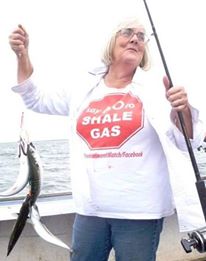
Yes, I know those are mackerel, and that is the Northumberland Strait.
Footnotes
1 DFO is also known as Fisheries & Oceans Canada. Throughout this document, except when referring to the Minister, I use the term DFO because that is what their website address is and also what everyone calls them.
2 CFIA: Canada Food Inspection Agency
3 ECCC: Environment & Climate Change Canada
4 It is not clear why DFO did not invite independent fisherfolk and their organizations to their Jan 6th briefing session. Some fishermen were very helpful to DFO during the herringcide event. They hold an enormous wealth of knowledge on Fundy marine life and related marine health issues. They are definitely stakeholders. Is it because some fishermen are meeting the province in court over the issues related to the tidal turbine installation?
5 For those who may have forgotten or been distracted at the time, here are just a few news reports re: the Harper attack on DFO. Read and imagine the culture of the surviving institution and its survivor personnel:
– https://thetyee.ca/News/2013/12/23/Canadian-Science-Libraries/
– http://halifax.mediacoop.ca/fr/story/harper-agenda-fisheries-and-oceans-%E2%80%93-sweeping-nation-wrecking-transformation/10441
– http://www.alternativesjournal.ca/policy-and-politics/crimes-against-ecology – http://fonv.ca/media/pdfs/Press_Release_-_Habitat_to_be_Removed_From_Fisheres_Act_March_12_2011__2_.pdf
– http://thechronicleherald.ca/novascotia/42231-400-dfo-jobs-chopping-block-50-atlantic-region – http://news.nationalpost.com/news/canada/killer-whale-expert-out-of-work-as-ottawa-cuts-ocean-pollution-monitoring-positions
6 This citation deals with an entirely different species, but also in the Gulf of Maine, of which the Bay of Fundy is a part. It does demonstrate how acidification could possibly be one of the causal factors for relocation and the herring densification witnessed by fishers, scientists, etc. in these locations.
7 Due to DFO’s and Cape Sharp/Emera’s failures to respond with answers to the questions in several relevant communications, Colin Sproul, BFIFA Sokesperson, shared them with me.
8 See: Hfx Court # 453771. September 26, 2016. Supreme Court of Nova Scotia. Between: The Bay of Fundy Inshore Fisherman’s Association, Halifax N.S. (APPLICANT) and Nova Scotia Minister of Environment, the Attorney General of Nova Scotia representing Her Majesty in Right of the Province of Nova Scotia, Fundy Ocean Research Center for Energy Limited, and Cape Sharp Tidal Venture Ltd.
9 In this talk found on RedSky-BlackSea see minute 1:25 : http://www.redsky-blacksea.com/podcast/au.mp3
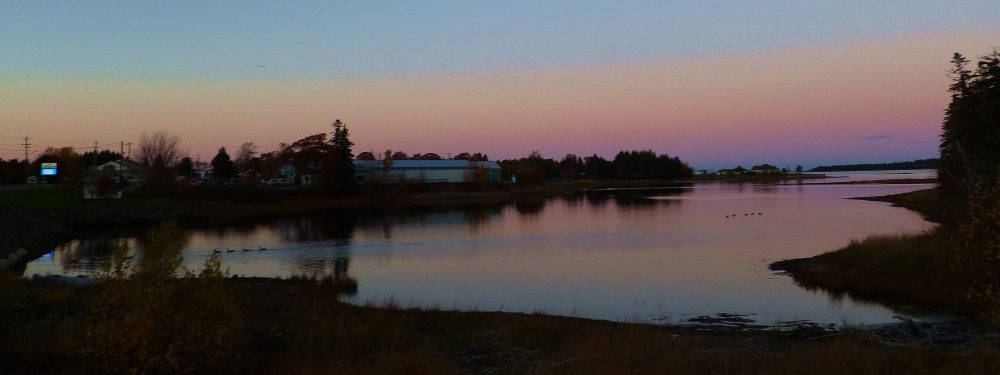
Pingback: Kent County chapter produces research document on dead herring crisis – Enjeux énergies et environnement